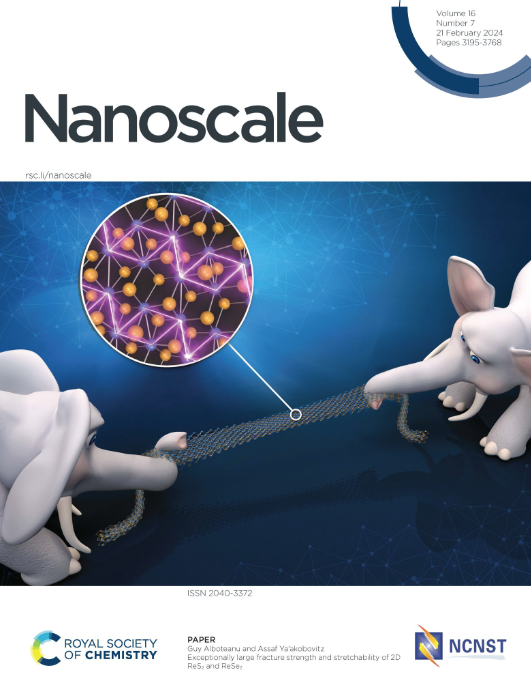Room-Temperature Solution-Processed Spin Organic Light-Emitting Diodes Based on Chiral 2D Halide Perovskites
IF 5.8
3区 材料科学
Q1 CHEMISTRY, MULTIDISCIPLINARY
引用次数: 0
Abstract
Chiral R-/S-methylbenzylamine (R-/S-MBA) was used as cation to form chiral 2D perovskites with different stoichiometric ratios ⟨n⟩ and halide compositions. The chiroptical properties of chiral perovskites, as well as their application in chiral spintronics, were investigated. The chemical composition and chiroptical properties of these materials were investigated by X-ray diffraction, circular dichroism (CD), magnetic CD (MCD), circularly polarized luminescence (CPL) and magnetic CPL (MCPL). Large Stokes shifts were observed when the halide composition of perovskite films with ⟨n⟩ = 1 was changed from iodide-rich to bromide-rich. Furthermore, circularly polarized electroluminescence was observed at room temperature in the absence of an external magnetic field. The degree of spin current polarization of 2D chiral perovskites reaches 86%. In terms of applications of spin device applications, spin organic light-emitting diodes were realized by using chiral 2D perovskite films with different halide compositions as the spin filters and using a polymer called Super Yellow as the emissive layer. The halide composition of the spin filter does not affect the emission wavelength of the device. A maximum gCP-EL of 1 × 10−2 was obtained. The chiroptical properties of chiral halide perovskites demonstrated in this work are useful for chiroptoelectronics and chiral spintronics.基于手性二维卤化物钙钛矿的室温溶液处理自旋有机发光二极管
手性R-/ s -甲基苄胺(R-/S-MBA)用作阳离子形成手性2D钙钛矿,其化学计量比⟨n⟩和卤化物组成不同。研究了手性钙钛矿的手性性质及其在手性自旋电子学中的应用。采用x射线衍射、圆二色性(CD)、磁性CD (MCD)、圆偏振发光(CPL)和磁性CPL (MCPL)等方法研究了材料的化学组成和光学性质。当⟨n⟩= 1的钙钛矿膜的卤化物组成从富碘变为富溴时,观察到大的Stokes位移。此外,在室温下,在没有外部磁场的情况下,观察到圆极化电致发光。二维手性钙钛矿的自旋电流极化度达到86%。在自旋器件应用方面,采用不同卤化物组成的手性二维钙钛矿薄膜作为自旋滤光片,采用超黄聚合物作为发射层,实现了自旋有机发光二极管。所述自旋滤波器的卤化物组成不影响所述器件的发射波长。最大gCP-EL为1 × 10−2。本研究证明的手性卤化物钙钛矿的手旋性质对手旋电子学和手性自旋电子学具有重要意义。
本文章由计算机程序翻译,如有差异,请以英文原文为准。
求助全文
约1分钟内获得全文
求助全文
来源期刊

Nanoscale
CHEMISTRY, MULTIDISCIPLINARY-NANOSCIENCE & NANOTECHNOLOGY
CiteScore
12.10
自引率
3.00%
发文量
1628
审稿时长
1.6 months
期刊介绍:
Nanoscale is a high-impact international journal, publishing high-quality research across nanoscience and nanotechnology. Nanoscale publishes a full mix of research articles on experimental and theoretical work, including reviews, communications, and full papers.Highly interdisciplinary, this journal appeals to scientists, researchers and professionals interested in nanoscience and nanotechnology, quantum materials and quantum technology, including the areas of physics, chemistry, biology, medicine, materials, energy/environment, information technology, detection science, healthcare and drug discovery, and electronics.
 求助内容:
求助内容: 应助结果提醒方式:
应助结果提醒方式:


